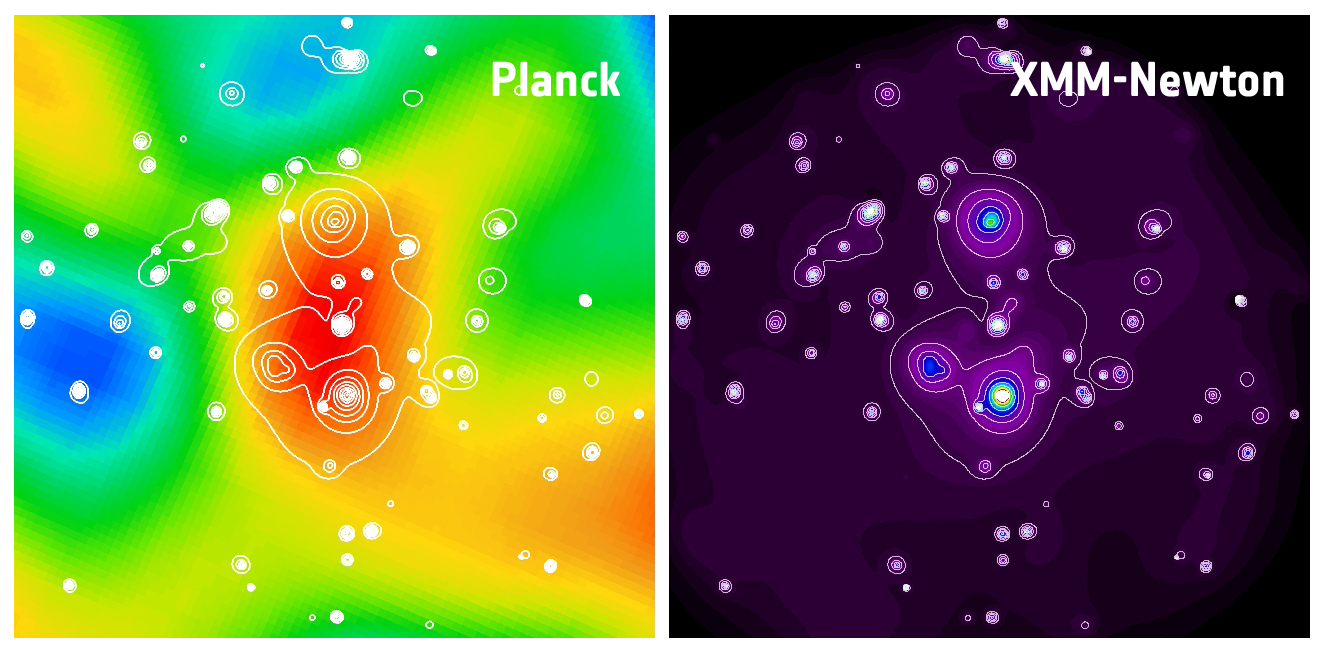The largest structures in the Universe as revealed by the Planck satellite
ESA-Planck web release
ESA's Planck satellite is currently producing
exceptional images in the millimeter waveband as part of its on-going
all-sky survey. These images are allowing the discovery of new
examples of the largest structures in the Universe: clusters and
super-clusters of galaxies. Such observations are possible due to the
detection of the photons from the cosmic microwave background (CMB),
the luminous echo of the Big Bang, the properties of which are
slightly modified when they cross clusters and super-clusters due to a
process called the Sunyaev-Zel'dovich (SZ) effect. For the first time,
this effect has been detected in nine different frequencies in the
direction of a super-cluster of galaxies, allowing the first-ever
discovery of this type of object via the SZ effect.
Composite multy-frequency image of a
super-cluster of galaxies discovered by Planck's instruments (left
image). The red is an excess emission due to the S-Z effect in the sub
millimeter domain. On the right image is a picture obtained in X-Rays
by the XMM-Newton satellite. This X-Ray emission is due to the diffuse
very hot gas within this cluster. Note that the XMM observation has
been performed on the indication of its location from Planck's data
(left image), making this super-cluster the first detected by the S-Z
effect. White contours in X-Rays indicate isophotes of the emission
and are reported for comparison on the left image. The size of this
image is about 15x15 arcmins on the sky, about a fourth of the size of
the Moon. Credits: ESA, Planck HFI and LFI consortia, XMM-Newton.
 |
This series of images shows Abell 2319, a nearby cluster of galaxies, in seven different frequency channels, from 44 to 545 GHz. The characteristic frequency dependence of the Sunyaev-Zel'dovich Effect is evident from a comparison of the various images. Credits: ESA, Planck HFI and LFI consortia
 |
More :
http://sci.esa.int/science-e/www/object/index.cfm?fobjectid=47692

